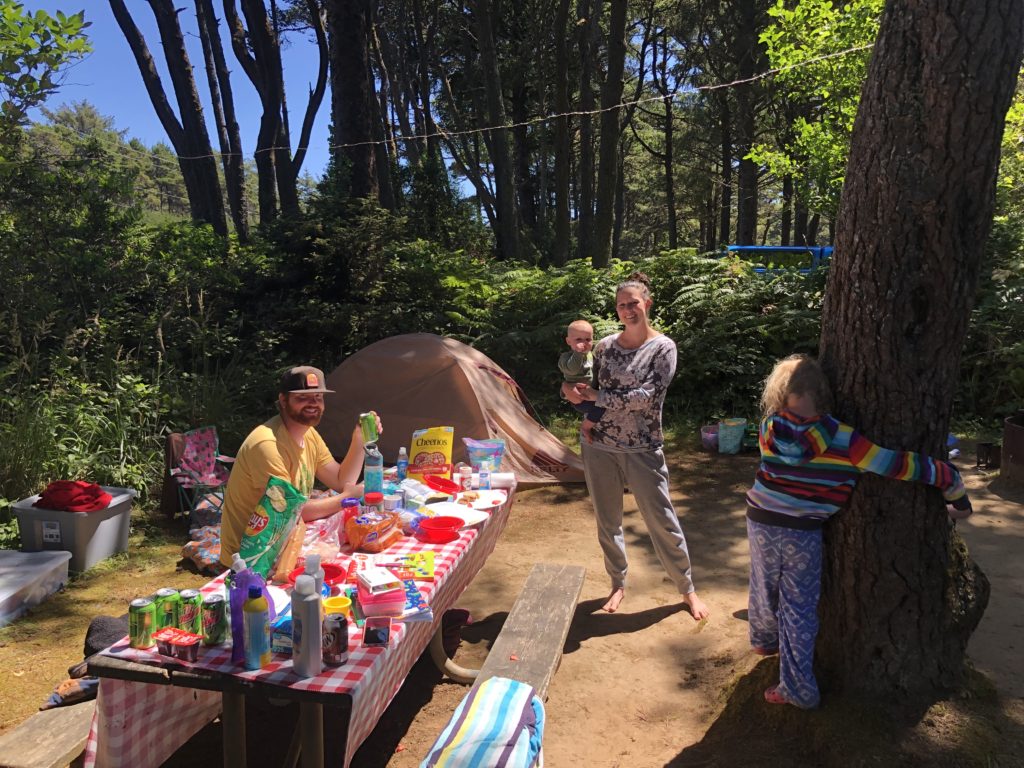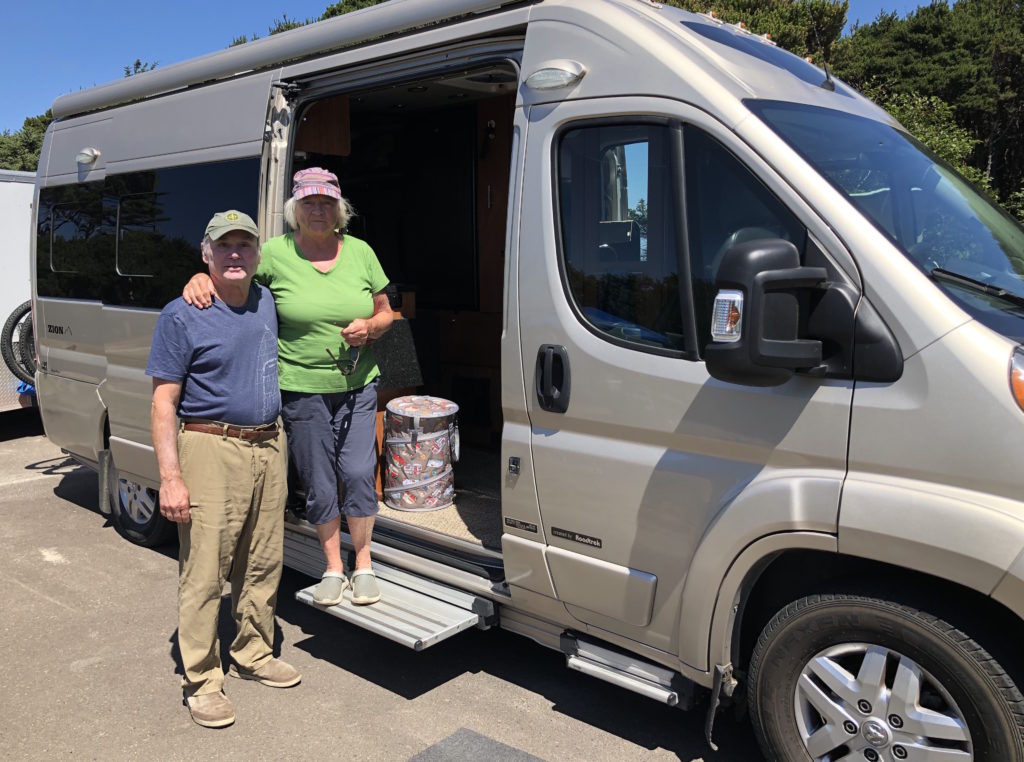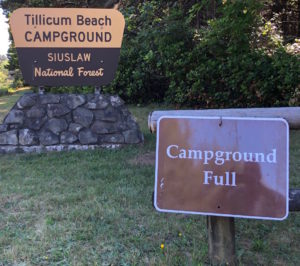
By ZACH URNESS/Salem Statesman Journal
It was another record-smashing year for the number of people who hiked, camped and explored Oregon’s outdoors, but whether that’s a good or bad thing depends on who you ask.
Oregon’s state park system set records for recreation visits and camping nights in 2021 while federal land managers also saw a continued record pace everywhere from the Columbia River Gorge to central Oregon and especially at the Oregon coast.
The result was campsites with few open spaces, trailheads with crowded parking lots and one of the highest rates of search and rescue missions in the nation. But some stressed that done right, more people outdoors can bring economic growth, particularly to rural areas, while creating a healthier population more connected to nature.
The number of people heading into Oregon’s outdoors has been increasing for the past decade, largely in line with the state’s growing population. But the Covid-19 pandemic supercharged demand for outdoor recreation, often beyond the capacity of well-known destinations, particularly on the coast, where visitors flocked to avoid extreme heat and wildfire smoke.
“We have been talking for years about how to get more people outdoors, so yes, you could definitely see this as a good thing,” said Oregon Parks and Recreation Department spokesman Chris Havel. “On the other hand, you’d much rather see a gradual increase. No system reacts well to rapid change and that includes parks with limited sewer, trash, parking and camping infrastructure.
“It has been something of a shock to the system.”

Extreme weather pushed people to the coast
The best metric for measuring recreation numbers comes from Oregon’s state parks system, which measures visits at more than 180 recreation sites statewide and 60 campgrounds in every corner of the state.
In 2021, those parks recorded an estimated 53.6 million day-visits, smashing the previous record of 51.7 million in 2016. In addition, the number of camper nights — the number of people who stay overnight at campsites — also set a record at 3.02 million, breaking the 2019 record of 2.9 million.
The biggest uptick was at the Oregon Coast, which recorded 31.4 million visits — almost 2 million higher than any previous year. Fueled by record-setting heat and wildfire smoke that plagued the rest of the state, the coast was cool and smoke-free, offering a welcome escape for overheated valley dwellers.
Other parts of the state — the Willamette Valley, Central Oregon and Eastern Oregon — had recreation visits at near record levels, but also saw slight late summer declines amid the heat and smoke.
Central Oregon, for example, likely saw close to record visits overall, but saw the biggest uptick in winter rather than summer, as the region experienced a record number of days with unhealthy air quality.
“Our summer use was slightly down from 2020 — although still much higher than any year prior to 2020,” said Jean Nelson-Dean, spokeswoman for Deschutes National Forest near Bend. “But our winter use increased (to record levels).”
Winter recreation up as well
Indeed, winter recreation has seen a major increase the past two winters, with ski resorts and sno-parks around Mount Hood, Santiam Pass and Willamette Pass seeing packed weekends. Some ski areas even began limiting the number of lift tickets they sell.
“I’ve never seen crowds like this year — it was just totally over the top,” Shelley Hakanson, owner of Wy’East Nordic, a cross-country ski school on Mount Hood, told the Statesman Journal last March. “Cars were parked for miles down both sides of the highway. There was people just jumping into the road. Some families were so desperate they went sledding down the cut-banks of the highway and into the ditch.
“It was insane.” Not every park saw record crowds in Oregon. Crater Lake National Park actually saw a drop in visits, along with Oregon’s national monuments, due to a number of factors, including indoor and recreation facilities that didn’t fully open in 2021 due to the pandemic.
With more people outdoors, there are naturally more accidents and that was true in 2021, although not at a record pace.
The number of search and rescue missions climbed to 1,082 missions, the third-highest behind 2019 (1,212 missions) and 2020 (1,128 missions). Oregon has one of the highest numbers of rescue missions in the nation, said state search and rescue coordinator Scott Lucas, who noted Oregon had more rescues than more populated recreation states such as Colorado and Arizona.
The most common activity that required a rescue was hiking, which brought 70% of rescues.
The number of fatal accidents while boating, which spiked to 27 in 2020, was down to 19 in 2021. That’s still above the long-term average of 14 deaths per year, according to the Oregon State Marine Board.
Campsites difficult to get, but adding more not easy
One of the most obvious consequences of the record visits was that campsites were harder than ever to reserve.
State park campgrounds were frequently 70 to 80 percent of capacity — meaning almost every site was taken on weekends, Havel said. And in the summer, many coastal campsites were 90 to 95 percent of capacity, meaning only a smattering of single-night campsites could be grabbed.

State parks is spending $50 million in state bonds to expand camping, but it’s not always where the highest demand is, Havel said.
“We know that we have a capacity problem, especially on the coast,” Havel said. “The thing is, we don’t have the authority to simply bulldoze the trees and build new camping loops. Land use laws don’t allow it and communities also must be part of the process. We are expanding in the Willamette Valley and east of the Cascades, but expanding any park takes time.”
Parks officials have made small changes to spread out use and bring in more revenue. The price for RV campers from out of state will increase next summer, for example. And parks has tried discounts on less popular campgrounds and increased prices on busier ones.
“Early data shows discounts do offer some encouragement for people to choose a lesser-known park over a bigger, more popular one,” Havel said.
On federal lands — such as U.S. Forest Service sites — the problem is just as pronounced. In Central Oregon, just about every campsite in Deschutes National Forest was snapped up by May last year, Nelson-Dean said.
One frustration has been that with many campgrounds moving reservations to Recreation.gov — the one-stopshop for federal public land reservations — people are hoarding campsites even when they don’t use them.
“You’ve got people huddling around their laptops at midnight six months before a reservation instead of keeping an eye on the weather and taking spontaneous respites into nature that once made living in Oregon so special,” said Gabe Howe, executive director of the Siskyou Mountain Club in Southern Oregon. “More spaces should be held for first-come, first-serve campers. That way Oregonians can carry on the tradition of packing up the family and getting away from it all when we need to.”
Zach Collier, owner of Hood Riverbased Northwest Rafting Company, said that filling campsites was a good thing and that there were plenty of spaces to be found if you looked hard enough.
“In the past, campgrounds weren’t full, so the fact that they’re getting used now is a good thing,” Collier said. “And there are a lot of campgrounds nobody uses. They’re a little off the beaten path and maybe don’t have RV hookups, but there are plenty of campsites out there.
“I just think we have too much marketing of these same handful of places,” Collier added. “And those places get hammered. People go where they see on the internet, and that tends to be the same places everybody wants to go.”
Dispersed camping popular, but has issues
With some campgrounds packed, however, federal land managers have seen an uptick in dispersed camping — putting up a tent off a national forest road in unofficial but legal locations — by people who are not well-equipped for it.
“A lot of people who are used to dumping in a toilet and throwing used batteries into the trash at a state campground are being pushed into the backwoods,” Howe said. “They don’t show up with sealed five-gallon buckets or waste bags. They poop in the streams and throw the batteries on the ground. That’s been concerning to see.”
Part of the issue in 2021 was massive wildfire closures limited some of the places that would traditionally absorb campers, hikers and boaters.
An area between Estacada and the Clackamas River corridor, all the way over through the Opal Creek and Mount Jefferson area — around 500,000 acres at least — remained closed or limited last summer following the 2020 Labor Day Fires. Those closures are likely to stay in place, for the most part, next summer.
Travel Oregon toes line
Jaime Eder, a spokeswoman for Travel Oregon said the agency walks a fine line between encouraging visitors who support local economies and not overwhelming areas with too many people.
“That’s the big thing we’re doing now, finding that balance, because so many communities rely on visitation,” she said.
She said this past spring, they geotagged social media ads that focus on high use areas and tailored messages about going early or picking alternative places.
“For example, if you were in Bend, you might get something about ‘Rather than going to Smith Rock, have you tried X, Y or Z as an alternative,’” she said. “Our social media channels are the best way to get ahead of visitation so that people are informed before they go.”
As Travel Oregon puts together its 10-year plan, one of the main things they’re working toward is creating a model of sustainable tourism.
While it’s easy to get frustrated by crowds, Collier stressed that more people outdoors brings lots of positives.
“We’re seeing more diverse populations outdoors in terms of age, gender, income,” he said. “It’s a good thing. It builds up our recreation economy, supports funding for world-class parks and creates more people who care about these places and how to protect them.”
The trick, Havel said, is just doing it better — getting the infrastructure to catch up to the number of people demanding it.
“It could be the beginning of something terrific,” Havel said. “But we have to do more planning and provide better options, including recreation closer to where people live. Right now we’ve been kind of just tripping from one season to the next, trying to keep up. The opportunity is there, but we’re not quite there yet.”
- Zach Urness has been an outdoors reporter in Oregon for 15 years and is host of the Explore Oregon Podcast. To support his work, subscribe to the Statesman Journal. Urness can be reached at zurness@StatesmanJournal.com or (503) 399-6801. Find him on Twitter at @ZachsORoutdoors.


